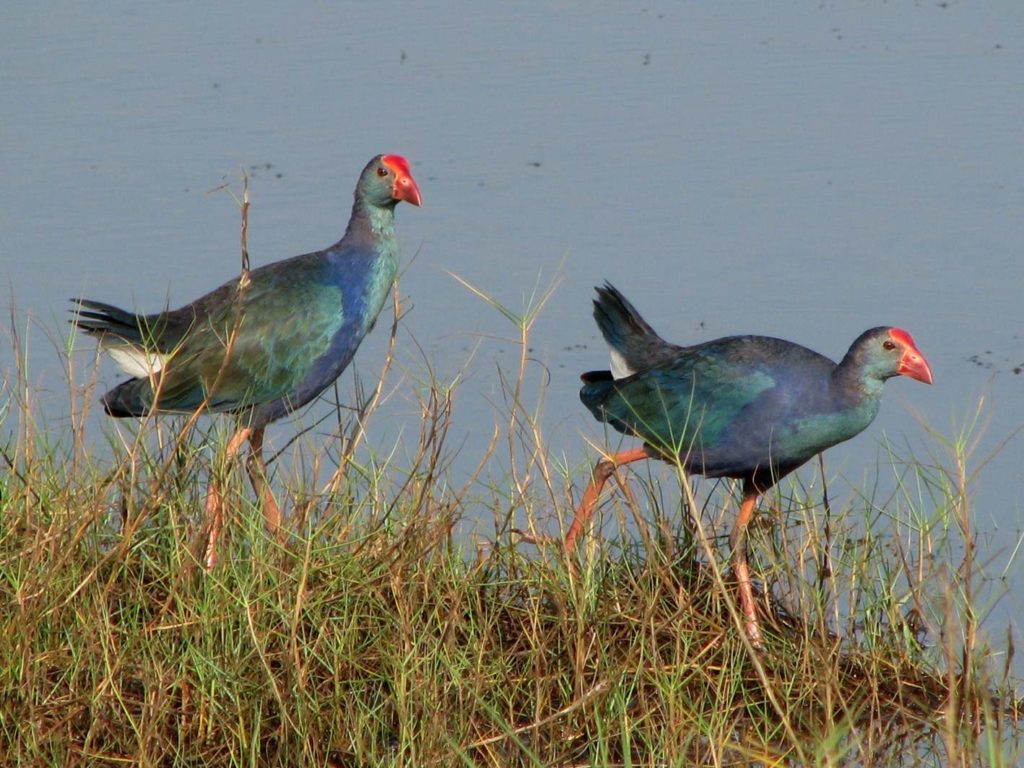Introduction:
Kottooli wetlands, also known as the lungs of Kozhikode city, is one among the 94 wetlands of national importance identified by the Government of India for conservation action under National Wetland Conservation Programme (MoEF, 2006-2007), as it was home to a very rich biodiversity packed in just around 150 acres in the heart of a city. Kottooli wetland is a rich mangrove habitat which acts as a primary recharge source for the wells in the locality (Radhakrishnan et al., 2006). It serves as a prime reservoir and receptacle of flood waters. It also acts as cleansing system by filtering and purifying surface water.
The ‘Connolly’ canal known after the then district collector Henry Valentine Conolly built in 1848 to facilitate inland water transport connecting the Korapuzha River in the north with the Kallayi River in the south with a length of about 11.4km, flows adjacent to the wetland forming its south-western boundary. The Chempra stream flowing from the northern side of the wetland also enriches the area. The wetland is perennial, and is linked to the Conolly canal. Kottooli wetlands are the home to a wide variety of flora and fauna. The plant community consists of about 240 species (Azeez et al., 2008) comprising of various species of figs (Ficus bengalensis, F.religiosa, F. callosa, F. arnottiana, F. racemosa, F. exasperata, F. hsipida and F. tinctoria) and mangrove species (Avicennia officinalis, Bruguiera cylindrica, Excoecaria agallocha, Aegiceras corniculatum, Acrostichum arueum etc.). Mangrove associates like Clerodendron inerme, Dolichandrone spathacea, Morinda tinctoria, Premna laifolia, Pongamia pinnata, Hibiscus tiliaceus, Barringtonia racemosa, Derris trifoliata, Cerbera manghas, Pandanus sp., etc., are also found in the area. Other aquatic vegetation found here are Nymphaea nauchali, Nymphoides inducus, Ipomoea aquatica, Hydrilla sp. etc. The adjacent Laterite hillocks, water spread areas with aquatic vegetation, sedges on the edges of the wetland, coconut plantations, mud flats and the mangrove vegetation provide good habitat for various species of birds.
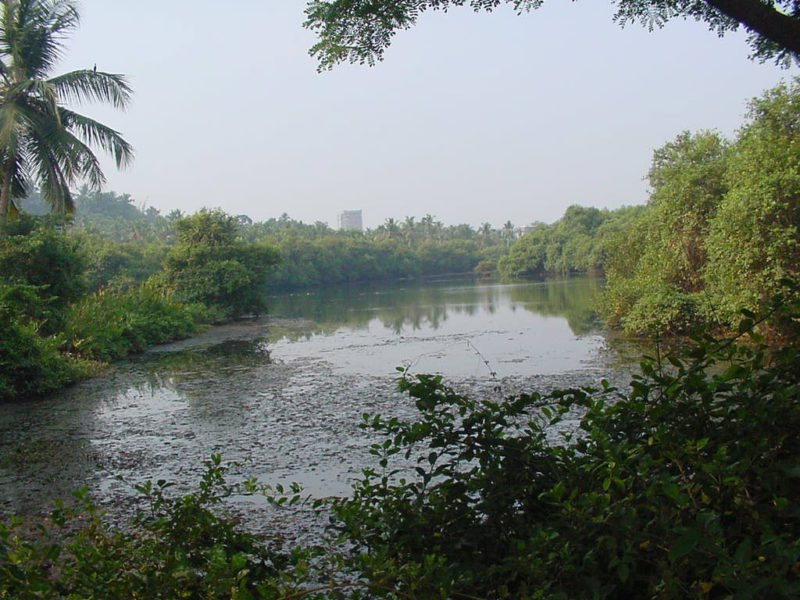
Methodology
The avian fauna in and around the wetland was documented by compiling data from the frequent visits to the area by the first author since 2002 and the regular weekly monitoring carried out by the co-authors (TS & AP) during November 2017 to May 2018.
Results
Altogether 134 species of birds under 102 genera belonging to 53 families and 15 orders were recorded from Kottooli wetlands. The Order Passeriformes formed the most diverse group with 54 species followed by Pelecaniformes (17 species) and Charadriiformes (14 species) . Of the 134 species, 47 were aquatic or wetland dependant species and 40 were winter migrants. The significant bird species observed from the area were Garganey Spatula querquedula , Northern Pintail Anas acuta, Emerald Dove Chalcophaps indica, Grey-bellied Cuckoo Cacomantis passerinus, Pied Cuckoo Clamator jacobinus, Drongo Cuckoo Surniculus lugubris, Common Moorhen Gallinula chloropus, Common Coot Fulica atra , Black-headed Ibis Threskiornis melanocephalus, Glossy Ibis Plegadis falcinellus, Oriental Darter Anhinga melanogaster, Woolly-necked Stork Ciconia episcopus, Pheasant-tailed Jacana Hydrophasianus chirurgus, Indian Grey Hornbill Ocyceros birostris, Heart-spotted Woodpecker Hemicircus canente, Rufous Woodpecker Micropternus brachyurus, Indian Pitta Pitta brachyura, Booted Eagle Hieraaetus pennatus, Brown-breasted Flycatcher Muscicapa muttui and the Booted Warbler Iduna caligata, of which Oriental Darter, Wooly necked Stork, and the Black–headed Ibis are listed in the threatened category of IUCN Redlist. Breeding colonies of Indian Pond Heron Ardeola grayii and Little Cormorant Phalacrocorax niger were located near the wetlands. Most of them were found nesting on Yellow Flame Tree Peltophora pterocarpum, near the edge of the Canal. Other birds observed breeding here during the study were Common Kingfisher Alcedo atthis, White-throated Kingfisher Halcyon smyrnensis, White-breasted Waterhen Amaurornis phoenicurus , Purple Swamphen Porphyrio porphyrio, Asian Palm Swift Cypsiurus balasiensis, Black Kite Milvus migrans, Brahminy Kite Haliastur indus, Shikra Accipiter badius, House Crow Corvus splendens, Large-billed Crow Corvus macrorhynchos , Rufous Treepie Dendrocitta vagabunda, White-cheeked Barbet Psilopogon viridis , Rose-ringed Parakeet Psittacula krameri, Black Drongo Dicrurus macrocercus, Purple-rumped Sunbird Leptocoma zeylonica, White-rumped Munia Lonchura striata, Red-whiskered Bulbul Pycnonotus jocosus, Common Myna Acridotheres tristis , Oriental Magpie Robin Copsychus saularis , etc.
The development of the Sarovaram Bio Park and the urban expansion projects, by altering the vast areas of the marsh wetland system, has more or less altered the ecology of the Kottooli wetlands. Large mangrove areas had systematically and steadily been cleared, leaving behind only disrupted stands presently found in some areas of the Park. Untreated effluents from the nearby hospitals and the surrounding areas are also drained in to this wetland ecosystem. Due to eutrophicaiton, the water has become highly polluted and the thick mass of algae and other noxious weeds like Salvinia molesta (African paayal) and Water hyacinth Eichhornia crassipes (Kula vaazha) flourish now.
The detailed systematic list of birds reported from Kottooli wetlands is given below. The systematics and nomenclature is followed here after Sashikumar et al. (2011) and Praveen (2015).
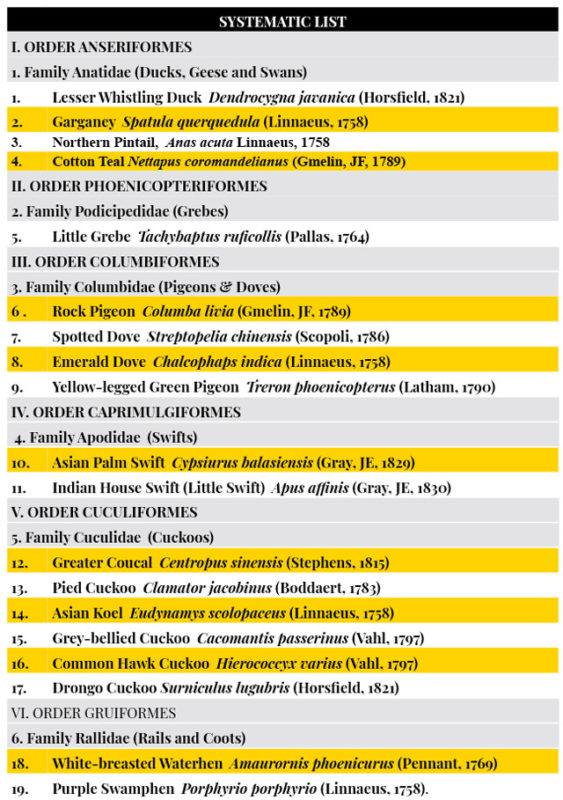
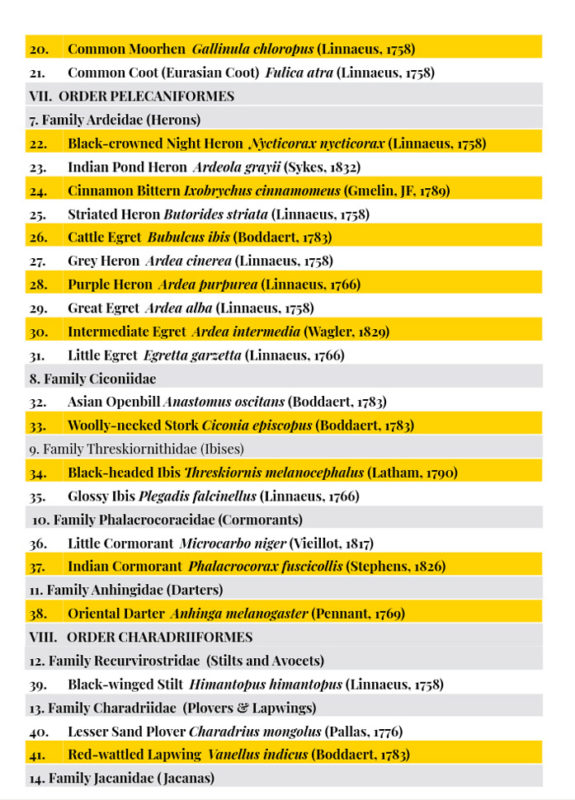
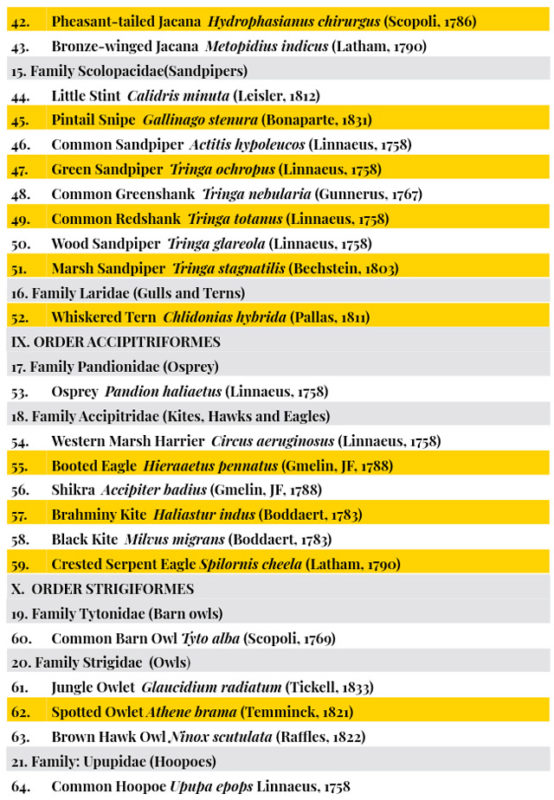
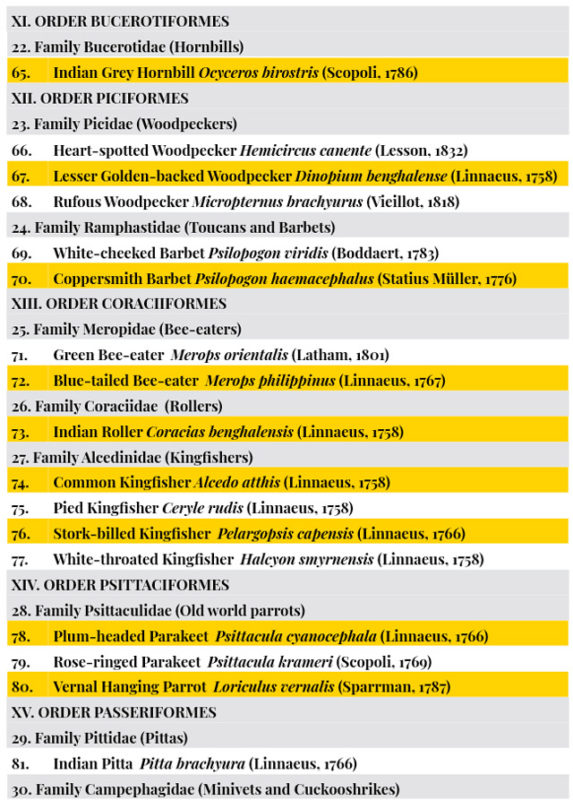
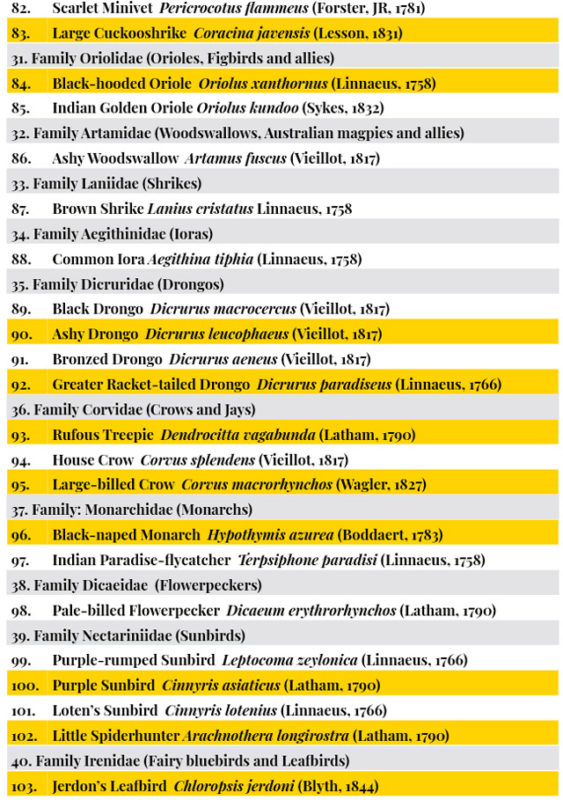
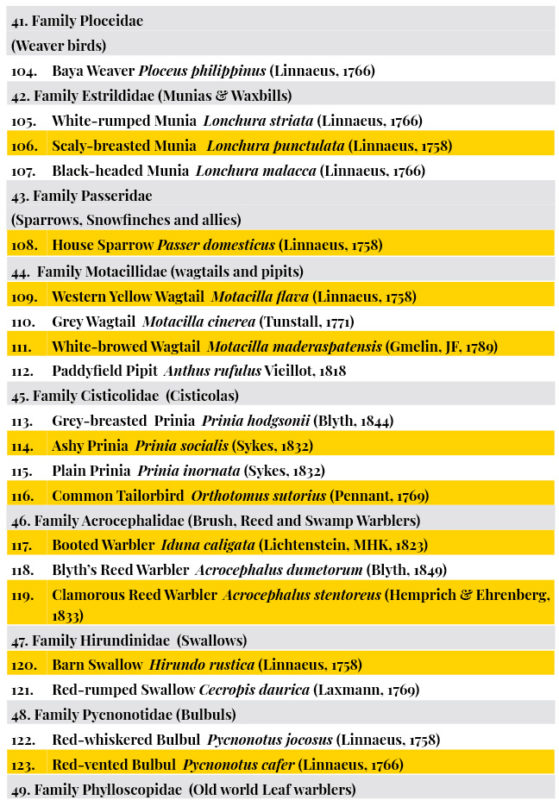
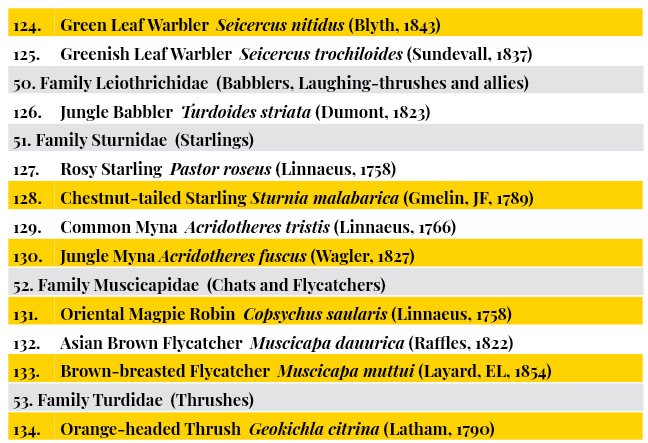
Acknowledgements
The authors are grateful to Dr. Kailash Chandra, Director, Zoological Survey of India, Kolkata, West Bengal and Dr. P.M. Sureshan, Office-in-charge, Zoological Survey of India, Western Ghats Regional Centre, Kozhikode, Kerala for facilities and encouragement.
References
- Azeez, PA., Bhupathy, S., Nikhil Raj and R Chandra. (2008). Conservation of Kottuli Wetlands, Kerala. Report Submitted to Tourist Resorts (Kerala) Limited. Salim Ali Centre for Ornithology & Natural History Society, Coimbatore.
- MoEF (2006-2007). Annual Report. Annexure VI A & VI B. pp 273-276.
- Praveen, J. (2015). A checklist of birds of Kerala, India. Journal of Threatened Taxa 7(13): 7983–8009; http://dx.doi.org/10.11609/jott.2001.7.13.7983-8009
- Radhakrishnan,C., K.C. Gopi and M. J. Palot. (2006). Mangroves and their faunal associates in Kerala, with special reference to Northern Kerala, India. Rec. zool. Surv. India. Occ. Paper No.246: 1-81. ZSI, Kolkata.
- Sashikumar, C., J. Praveen, M.J. Palot & P.O. Nameer (2011). Birds of Kerala: Status and Distribution. DC Books, Kottayam, Kerala, 835pp.
